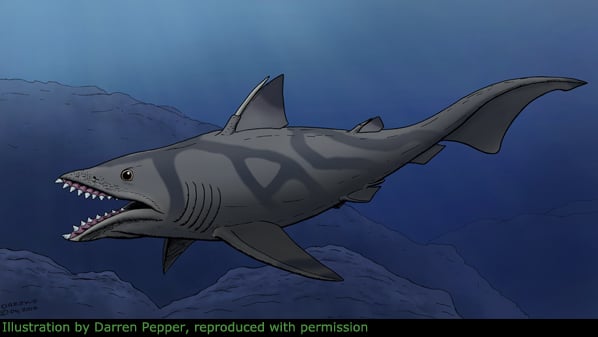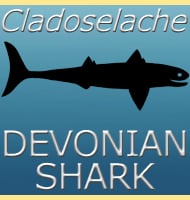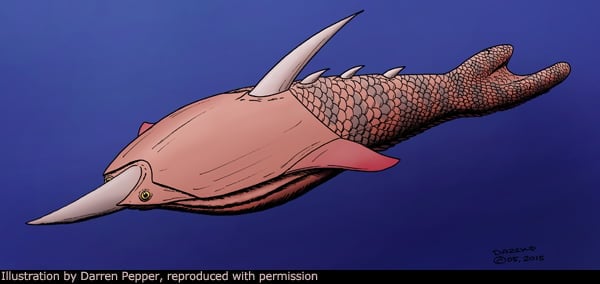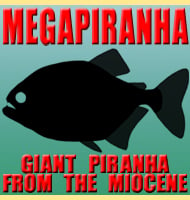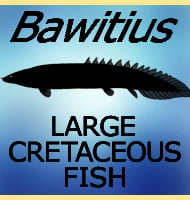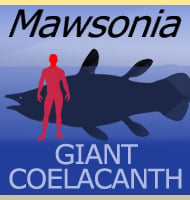


Panderichthys

Name:
Panderichthys
(Pander’s fish).
Phonetic: Pan-der-ik-fiss.
Named By: Dross - 1941.
Classification: Chordata, Sarcopterygii,
Elpistostegalia, Panderichthyidae.
Species: P. rhombolepis, P. stolbovi.
Diet: Carnivore/Piscivore.
Size: Around 90-130 centimetres long.
Known locations: Latvia. Also Russia?
Time period: Frasnian of the Devonian.
Fossil representation: Several individuals, they
often represented by incomplete and fragmentary remains.
Panderichthys
was a fish of the mid and late Devonian period, and one that may help
to complete a gap in evolutionary theory. The fins of Panderichthys
show the first development of fingers within them, and when compared
to other Devonian era fish and amphibians, helps to complete what we
would have expected the transition from fin to 'hand’ to have
looked like. There also seems to have been a shift towards the pelvic
region as the primary source of locomotion, just like in land living
animals.
However,
while the features of Panderichthys help to show
us how the
transition from water to land happened, we do not know for certain if
Panderichthys was a part of this, or rather, was
just one of many
forms that could have completed the transition. Fossil track ways of
fish very similar to Panderichthys have been
established to come from
the late Emsian period of the Devonian (Niedźwiedzki et al, 2010)
indicating that the transition and evolution could well have been
underway some fifteen million years before the known appearance of
Panderichthys. Assuming that Panderichthys
did not live back then as
well, and we have simply not found the fossils, then Panderichthys
would have been a late surviving form of an archaic creature that had
already evolved into a more advanced terrestrial form.
As
a living creature, Panderichthys may have
specialised in living in
shallow and debris filled waters, where stout fins would have been
welcome features for aiding movement when there was not enough free
water to keep the body buoyant. We do not know for certain if
Panderichthys ever left the water to walk on land,
though study of
the body shows that terrestrial locomotion was feasible for the genus,
if only by pushing the body with the tail. Why Panderichthys
would
want to leave the water is also not known, but a possible scenario
could be Panderichthys squirming through wet swamps
to reach new bodies
of water, either to hunt or possibly to reach spawning grounds,
perhaps in a manner similar to modern day salmon or some fresh water
eels (Anguilla).
Panderichthys
is named in honour of Heinz Christian Pander (a.k.a. Christian Heinrich
Pander).
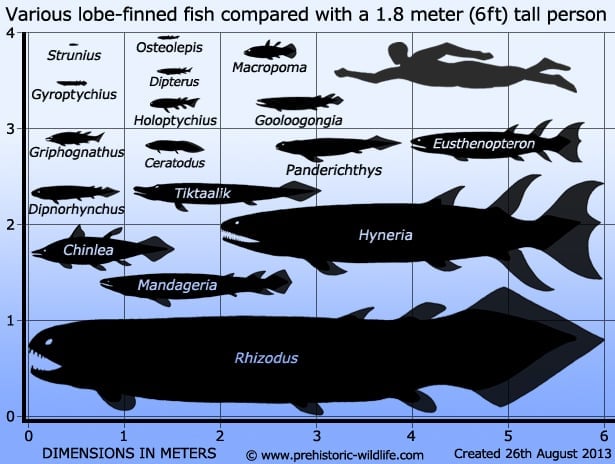 >
>More information on the above fish can be found on their corresponding pages; Ceratodus, Chinlea, Dipnorhynchus, Dipterus, Eusthenopteron, Gooloogongia, Griphognathus, Gyroptychius, Holoptychius, Hyneria, Macropoma, Mandageria, Osteolepis, Panderichthys, Rhizodus, Strunius, Tiktaalik (upper estimate).
Further reading
- The pelvic fin and girdle of Panderichthys and
the origin of
tetrapod locomotion - Catherine A. Boisvert - 2005.
- Tetrapod trackways from the early Middle Devonian period of Poland
- Grzegorz Niedźwiedzki, Piotr Szrek, Katarzyna Narkiewicz,
Marek Narkiewicz & Per E. Ahlberg - 2010.
----------------------------------------------------------------------------
Random favourites
 |
 |
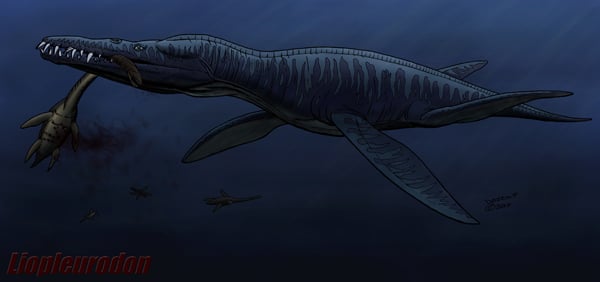 |
